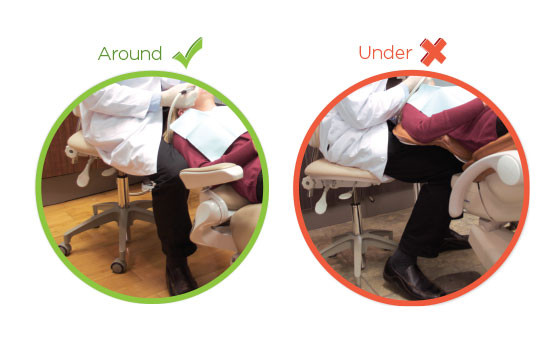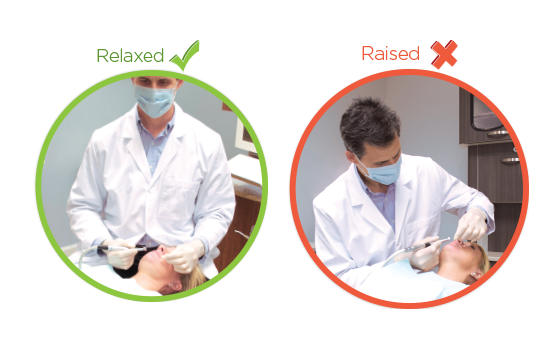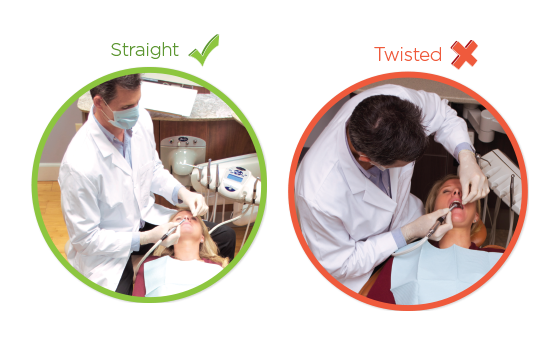Improper leg positioning affects your health and hinders access to the oral cavity:
- The narrow chair back allows more freedom to move around the patient and the ability to position the oral cavity at the proper height.
- A narrow chair back enables a clinician to position their legs around the chair, allowing both the dentist/hygienist and assistant access to the oral cavity from any position.
- With a wide chair back, the legs may be positioned underneath the chair potentially causing circulation issues and raising the oral cavity above a comfortable working height.




